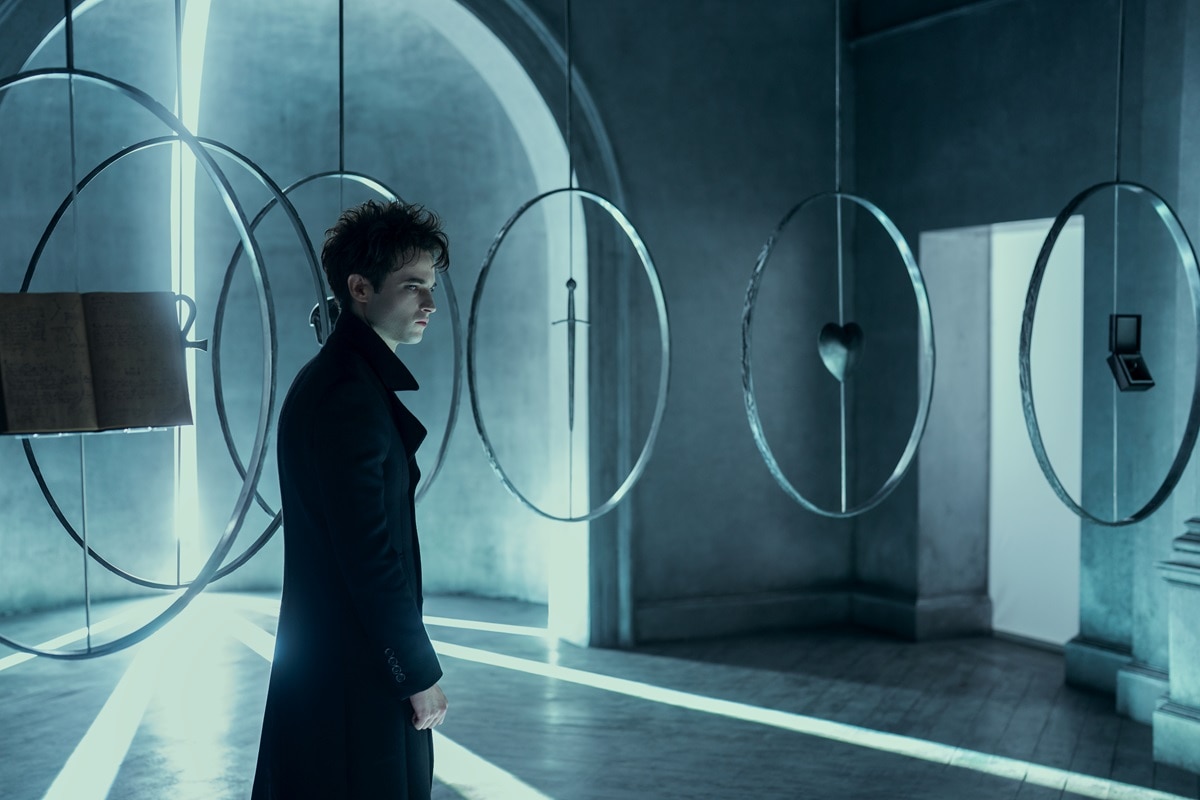Welcome to the Couch Club, our recurring column devoted to all things #DCTV! This week, Joshua Lapin-Bertone looks at some of Morpheus’s more toxic behavior and wonders whether the immortal being has actually learned anything.
Remember that Carrie Underwood song where she defaces her ex’s car? The way Dream handles breakups makes that seem tame.
One of the most interesting things about The Sandman’s Morpheus is the way he’s unlike many of DC’s other characters. While Dream isn’t an outright villain, it would be hard to call him a hero. He’s more like a force of nature, personified as a living entity.
Other DC characters like Guy Gardner or Red Hood may be morally ambiguous, but none of them have ever done anything as reprehensible as sending their ex-girlfriend to Hell for centuries.

Dream is forced to confront these actions in The Sandman’s second season premiere, “Season of Mists.” This is a moment I’m familiar with, having read it in The Sandman #21 and experienced it in the Audible adaptation. However, one thing that I like about different DC adaptations is the way they help us look at familiar moments with new eyes.
Comic books have their own sense of pacing and use artwork to convey emotions, while panels let each scene breathe in its own way. With a live action show like The Sandman, we can have actors change the meaning of a line simply by putting particular emotions in their voice. The pacing and even the soundtrack of a scene can change the entire context. When this is done well, I walk away with a deeper appreciation for a scene as it helps me see a familiar story through new eyes.
That’s one of the reasons I was looking forward to seeing how Netflix would handle “Seasons of Mists,” because the conversation between Dream and his sister Death is so important and marks an interesting turning point for the character.

Centuries ago, Morpheus fell in love with an African woman named Nada. Although Nada’s feelings for Dream were strong, she spurned his advances because she knew that a mortal human forming a union with a member of the Endless would lead to chaos. In retaliation, Morpheus condemned her to an eternity in Hell.
Needless to say, this is not an appropriate way to handle a breakup.
For 10,000 years, Dream left Nada in Hell while he went about his life. Even worse, he didn’t give it a second thought until his sister Death rightfully called him on it. After her help in getting him to see the error of his ways (a big understatement), Morpheus decides to go to Hell to rescue Nada, even if it means going up against Lucifer.
One of the reasons I was eager to see how this played out in the Netflix adaptation is because the conversation has always fascinated me. In less than two pages, Death is able to convince Dream that what he did to Nada was wrong. I’ve always wondered what changed his mind so quickly. Was it because he trusts Death’s judgement? Did Morpheus’s love for Nada cause him to reflect? Was it pride? Or did his 100 years in captivity give him empathy for Nada’s situation?

There are many ways to read that conversation, and the scene between Tom Sturridge (Dream) and Kirby Howell-Baptiste (Death) does a great job at showing it to us from a new angle while still staying true to the source material.
We also get some new pieces of dialog to help sell Dream’s change of heart. Death brings up Morpheus’s 100 years in captivity and compares it to Nada’s 10,000 years trapped in Hell.
“If I’ve committed a wrong, I must make it right,” Morpheus tells Death after he resolves to save Nada.
“Not all wrongs can be,” Death replies. Dream’s statement is in the original comic book, but Death’s reply isn’t. It’s a small addition, but an important one. It speaks to the way this TV series is going back to the original comic book and updating the stories for modern sensibilities. With “Season of Mists,” we explore more of Dream’s accountability.
“Reflect and learn from your mistakes,” Death says. In other words, to borrow a common 2025 phrase, do better.
“What kind of king would I be if I did not risk everything to right a wrong for which I am responsible,” Morpheus asks. That line got me thinking too.

If Dream truly loved Nada, the thought of her suffering in Hell for 10,000 years would disturb him to his core. His eagerness to save her doesn’t come from empathy, or any grand realization. It’s pride. This is a big mistake on his ledger. Desire humiliated him by weaponizing it against him, and even Death wouldn’t defend him on it.
The fact that he mentions his standing as a ruler rather than Nada’s safety is very telling. The truth is that I don’t believe Morpheus ever loved her, despite his protests. Maybe he doesn’t know what love is. When you’re a member of the Endless, the concept of humanity is so detached from your existence that it could be hard to comprehend.
But that’s one of the great things about the show. This is the type of story we couldn’t tell with Superman, Batman or Wonder Woman. But The Sandman is a different kind of story, and it makes us think about life, death, dreams and love in new ways.
The Sandman Season 2 is now streaming on Netflix.
Joshua Lapin-Bertone writes about TV, movies and comics for DC.com, is a regular contributor to the Couch Club and writes our monthly Batman column, "Gotham Gazette." Follow him on Bluesky at @joshualapinbertone and on X at @TBUJosh.
NOTE: The views and opinions expressed in this feature are solely those of Joshua Lapin-Bertone and do not necessarily reflect those of DC or Warner Bros. Discovery, nor should they be read as confirmation or denial of future DC plans.















